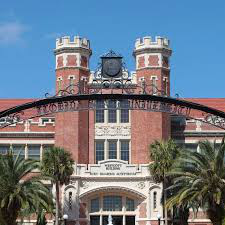Speaker
Description
The pion-nucleus reaction is an important source of information about hadronic matter. At incident momenta below 2 GeV/c, it gives access in a very unique way to the properties of baryonic resonances in the nuclear medium. While the region of the Δ(1232) resonance, corresponding to incident pion beam momenta of about 300 MeV/c, was studied in detail in the past, only very scarce measurements were provided at higher energies, e.g. in the second resonance region (N(1440), N(1520), N(1535),..). Such information is needed in the context of dense hadronic matter studies for the description of heavy-ion reactions at a few GeV, where pion-nucleus dynamics play a crucial role. More general, measurements of proton and pion differential spectra are needed to validate transport models or hadronic cascades used in GEANT4 for various applications involving pion detection. This talk will focus on the analysis of π⁻+C reactions performed with HADES [1], using the GSI pion beam at an incident pion momentum of 0.7 GeV/c. Pion and proton differential spectra measured in various exit channel topologies (inclusive, pπ⁻, pπ⁺, pp, pπ⁺π⁻,…, ππpp) are compared to predictions of the INCL++ cascade [2] and of transport models (SMASH [3,4], rQMD [5], GIBUU [6],…). The results test selectively the capacity of the models to describe the various mechanisms (quasi-elastic scattering, multipion production, re-scattering and pion absorption). The sensitivity of the data measured in the quasi-elastic channel to short range correlations is also investigated.
[1] G. Agakishiev et al. (HADES collaboration), Eur. Phys. J. A41, 243-277 (2009).
[2] S. Leray et al. J. Phys. Conf. Series 420 (2013) 012065.
[3] J. Weil et al., Phys. Rev., C 94, 054905 (2016).
[4] H. Petersen, Nuclear Physics A, 1 (2018).
[5] H. Sorge, Phys. Rev. C 52, 3291 (1995).
[6] J. Weil et al., Eur. Phys. J., A 48, 111 (2012).
| speaker affiliation | IJCLab Orsay |
|---|

